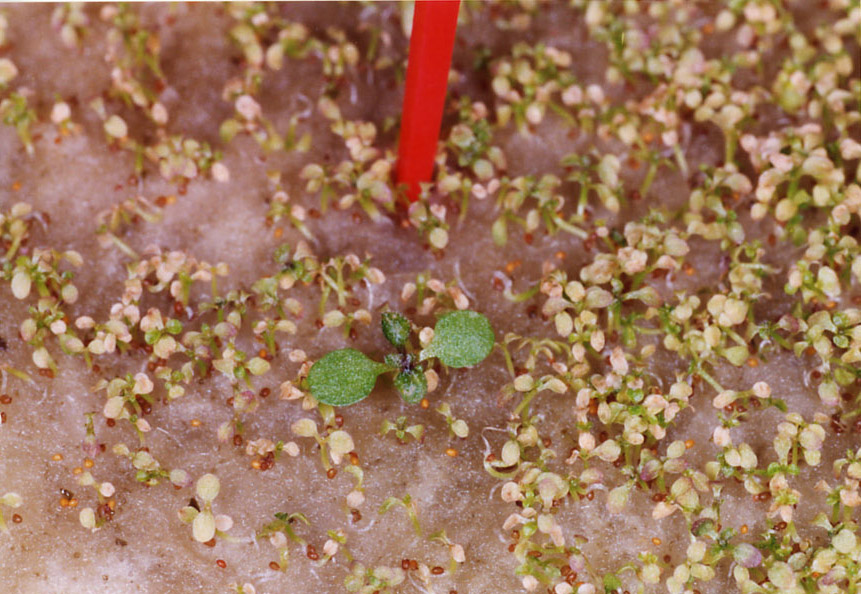- Genetics of
plant adaptation to serpentine soils
- Serpentine soils provide a wonderful model for the
study of adaptive evolution in nature. Their unique chemical and
physical properties (e.g., low in available calcium, high in
magnesium, low water holding capacity) are responsible for the evolution of
their unique flora, often including many rare and endemic plant species.
By identifying pairs of plant taxa, one of which is adapted to serpentine
soils and the other of which is not,
Doug Schemske
and I are setting up QTL mapping pedigrees of plants (e.g.,
Linanthus parviflorus, L. bicolor) that segregate for tolerance
to serpentine soils.
 In
addition, I have screened Arabidopsis mutants for their ability to
grow in defined nutrient solutions with very low levels of calcium and very
high levels of magnesium. I recently identified a
recessive mutation in CAX1 which greatly
increases survival and growth on loCa-hiMg solutions. I am
developing QTL mapping populations in Streptanthus glandulosus, an
Arabidopsis relative that occurs both on and off serpentine soils.
Kristy Brady, a grad student in my lab, is working on the ecology,
physiology, and genetics of serpentine soil tolerance in Mimulus guttatus.
In
addition, I have screened Arabidopsis mutants for their ability to
grow in defined nutrient solutions with very low levels of calcium and very
high levels of magnesium. I recently identified a
recessive mutation in CAX1 which greatly
increases survival and growth on loCa-hiMg solutions. I am
developing QTL mapping populations in Streptanthus glandulosus, an
Arabidopsis relative that occurs both on and off serpentine soils.
Kristy Brady, a grad student in my lab, is working on the ecology,
physiology, and genetics of serpentine soil tolerance in Mimulus guttatus.
Toby Bradshaw's Home Page
Last revised: 6-November-2005
 In
addition, I have screened Arabidopsis mutants for their ability to
grow in defined nutrient solutions with very low levels of calcium and very
high levels of magnesium. I recently identified a
recessive mutation in CAX1 which greatly
increases survival and growth on loCa-hiMg solutions. I am
developing QTL mapping populations in Streptanthus glandulosus, an
Arabidopsis relative that occurs both on and off serpentine soils.
Kristy Brady, a grad student in my lab, is working on the ecology,
physiology, and genetics of serpentine soil tolerance in Mimulus guttatus.
In
addition, I have screened Arabidopsis mutants for their ability to
grow in defined nutrient solutions with very low levels of calcium and very
high levels of magnesium. I recently identified a
recessive mutation in CAX1 which greatly
increases survival and growth on loCa-hiMg solutions. I am
developing QTL mapping populations in Streptanthus glandulosus, an
Arabidopsis relative that occurs both on and off serpentine soils.
Kristy Brady, a grad student in my lab, is working on the ecology,
physiology, and genetics of serpentine soil tolerance in Mimulus guttatus.